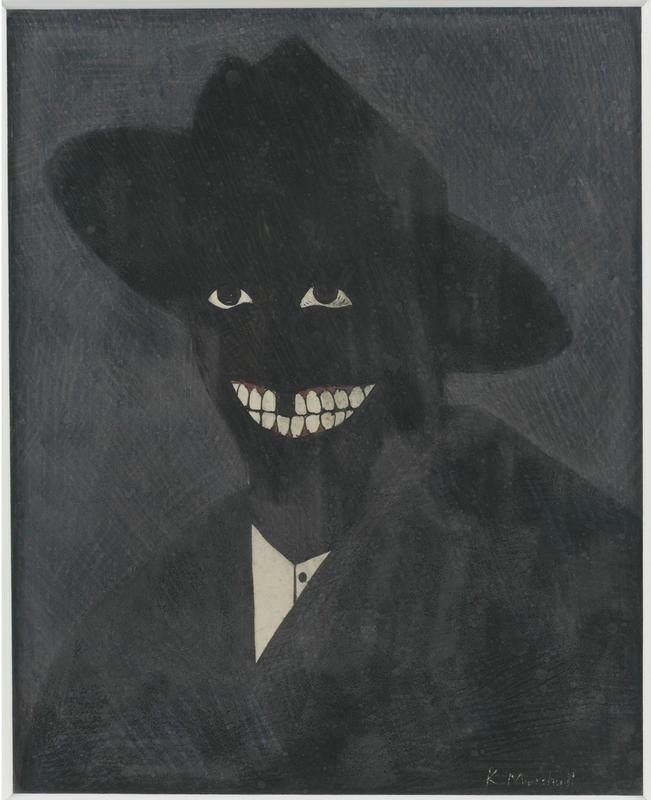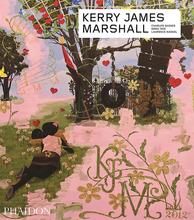More about A Portrait of the Artist as a Shadow of His Former Self
- All
- Info
- Shop

Contributor
A Portrait of the Artist As a Shadow of His Former Self. Say that three times fast. The title sums up this painting perfectly. That is, if you’re just taking it at face value. There’s a lot more to be said about this painting than how eerie it may look at first glance.
This small 8 by 6 1/2 inch work was painted by Kerry James Marshall in 1980 with egg tempera on a piece of paper. And it wound up being a huge turning point in the type of art that Marshall would create. Before this self portrait, Marshall focused his talents more on mixed media collages. But after Shadow, Marshall began painting more, featuring Black people in the various ways that they live their lives.
This painting is very black. Literally. From a distance, the only things you can really make out are the pair of eyes, a grinning smile with a missing tooth, and part of what looks like a shirt. These are the only white contrasts in a sea of darkness. In that regard, it's kind of abstract. If we didn't have a title to help us out, we might not be able to tell that this is supposed to be a person.
If you get closer, you can start to make it all out a bit better. You can see that there are two shades of black. A darker black that outlines a man wearing a hat and a jacket over his white shirt. The lighter black serves as the background.
If you get even closer than that, you can see the pink of the man's gums.
Depending on how far you are, the painting changes from an abstract representation of vague human characteristics, to echoes of a human, to a man outright.
And that’s basically what Marshall is trying to say with this self portrait. Like Gordon Parks. he was heavily inspired by Ralph Ellison's 1952 novel Invisible Man, whose protagonist is a young Black man who navigates being virtually invisible to the eyes of white America because of the color of his skin. They don't see him as human because their preconceived notions keep him at a distance. If they would allow themselves to get close enough, they'd understand that he's just as human as they are.
That notion, and the way that Marshall conveys that in his self portrait, are overwhelmingly metaphorical.
It's fitting that Kerry James Marshall had to look inward before he was able to be a voice for his people on a larger scale. Racial identity is a tough thing to tackle personally, but once you do, you can become a refuge for others who are going through the same thing. And that's what Marshall eventually became through his work.
I think it's safe to say that the art scene and the world as a whole is better for it.
Sources
- Artforum. “LACMA Gifted Kerry James Marshall’s Portrait Of The Artist As A Shadow Of His Former Self” February 18, 2019. https://www.artforum.com/news/lacma-gifted-kerry-james-marshall-s-portr…
- Easter, Makeda. LACMA acquires Kerry James Marshall’s haunting, potent portrait of a ‘Shadow of His Former Self’ LA Times. February 15, 2019. https://www.latimes.com/entertainment/arts/la-et-cm-kerry-james-marshal…
- Cotter, Holland. “Kerry James Marshall’s Paintings Show What It Means to Be Black in America” The New York Times. October 20, 2016. https://www.nytimes.com/2016/10/21/arts/design/kerry-james-marshalls-pa…












